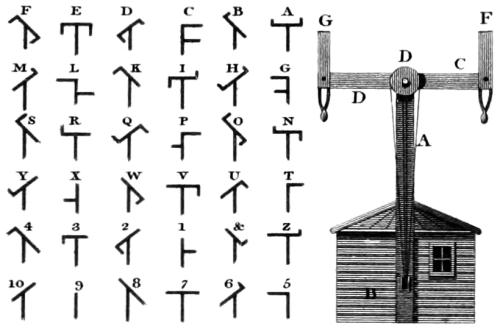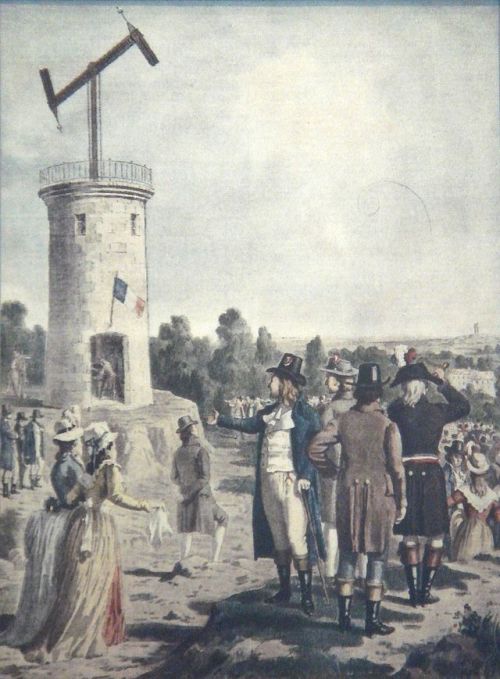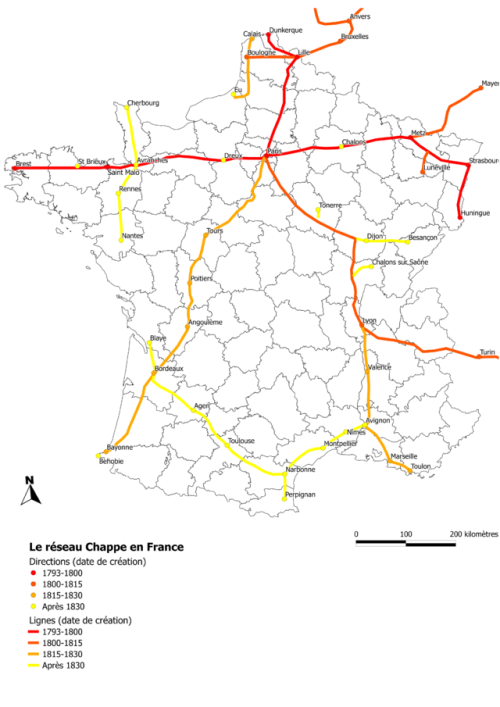Napoleonic France’s wireless communication network— The Semaphore LineBefore the telegra
Napoleonic France’s wireless communication network— The Semaphore LineBefore the telegraph fast traveling communication was quite difficult, especially over long distances. The most common way of communicating over long distances was by courier, such as a fast pony or ship. This method could take weeks, months, or perhaps even years. Some ingenious peoples had the idea of using smoke signals, torches, and flag signals for faster communication. In 1792 a Frenchman named Claude Chappe invented the Semaphore Telegraph. The Semaphore Telegraph consisted of a series of towers placed over a certain distance which would communicate to each other visual coded messages. Each semaphore tower had a fixture with black movable arms which could be rotated and moved to symbolize a certain letter in the alphabet, number or symbol. Altogether, the two arms and crossbar could create up to 196 symbols. Chappe chose this system over signal fires, lamps, flags, and mirrors because he determined through experimentation that it was the easiest to see over long distances. In each tower, a man would watch the closest nearby tower through a telescope. When one tower transmitted a message, the adjoining tower would do the same, communicating the message down the line until it arrived from point A to point B. The Semaphore Line used encoded messages as well, and each Semaphore tower was issued a secret codebook.Claude Chappe’s first line streched from Strasbourg to Paris with 50 Semaphore towers relaying messages. Originally the line was used to communicate commodities prices for investors in Strasbourg. However the French Consul/Future Emperor Napoleon Bonaparte saw value in the system as tool for the French Government and military. He sponsored Chappe to build a system of Semphore lines in order to send military messages to the frontlines in Germany, Belgium, the Netherlands, and Italy. After Napoleon’s fall, construction of Semaphore lines continued and gradually expanded. By the mid 19th century, a network of lines connecting Paris with most major French cities had been built, with at network of 556 stations stretching over 3,000 miles. Other nations such as the UK, Sweden, Prussia, Spain, Canada, and United States adopted similar systems. By 1850, use of the Semphore line waned as telegraph technology became more common. -- source link
#history#communication#semaphore line#france#french history#napoleon bonaparte#claude chappe#science#technology


